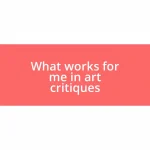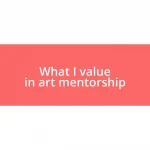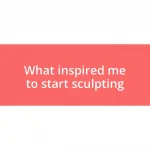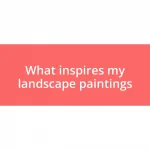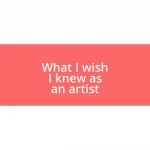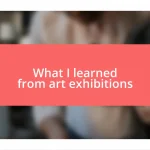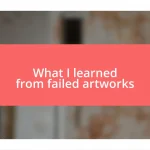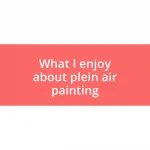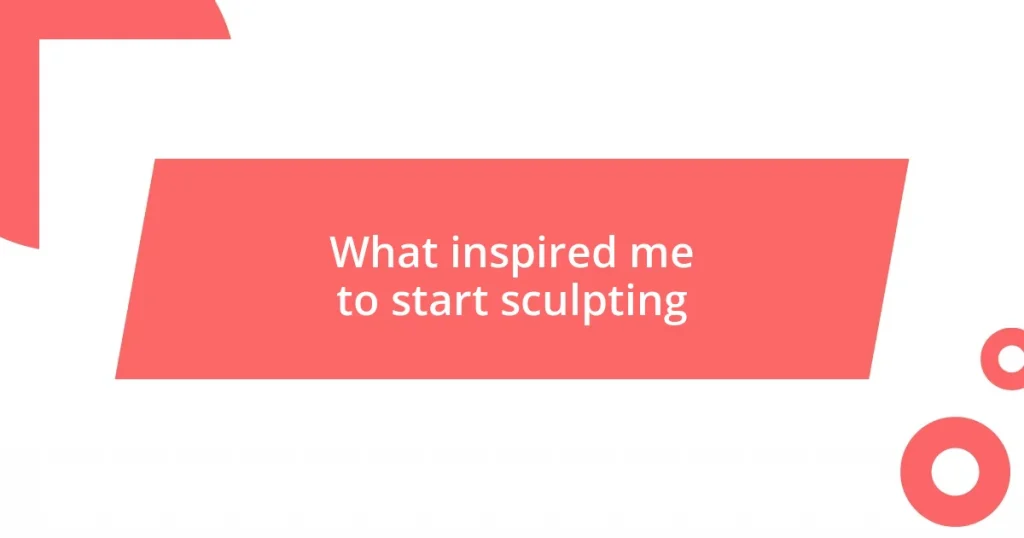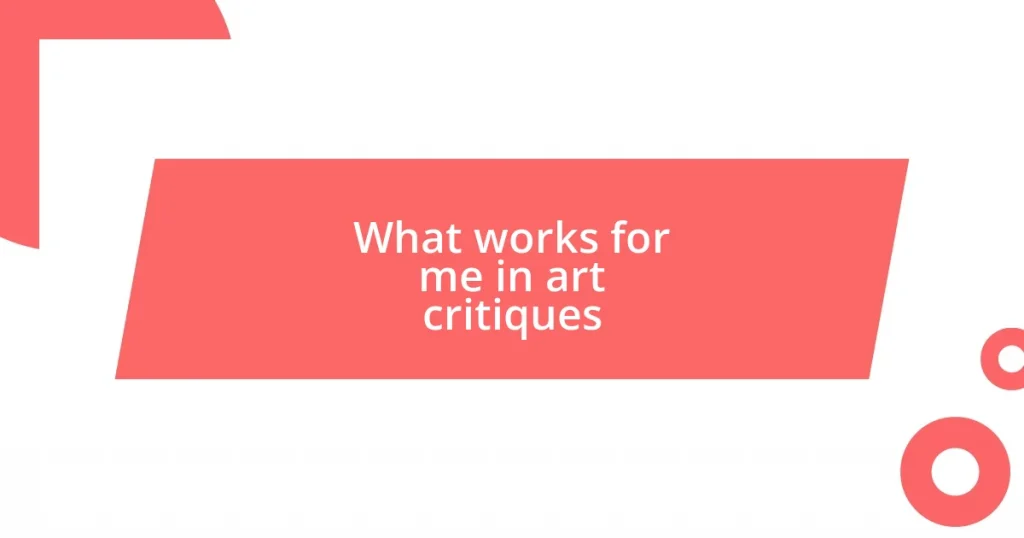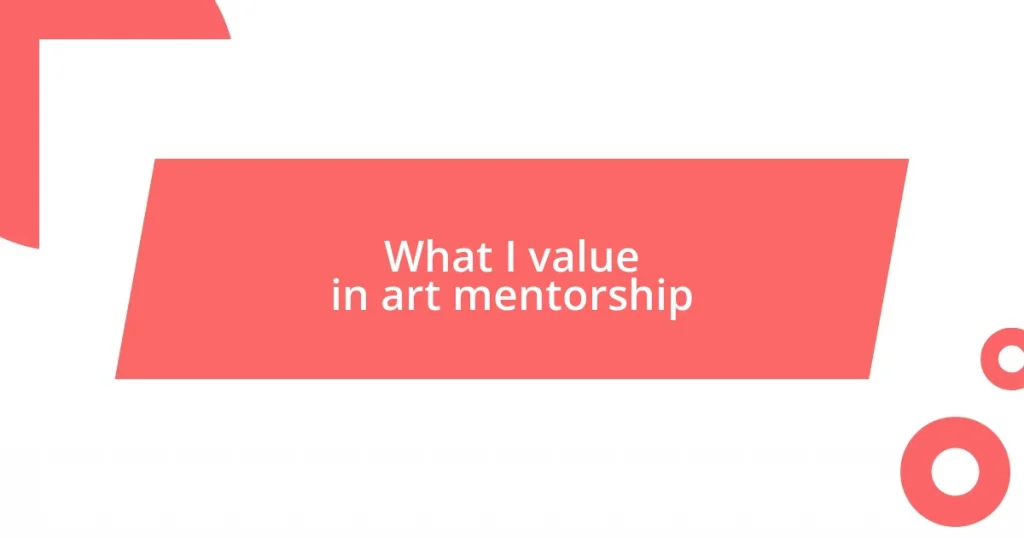Key takeaways:
- Initial encounters with art in galleries and sculpture parks ignited a passion for creative expression and self-discovery.
- Influential artists such as Michelangelo, Alberto Giacometti, and Anish Kapoor inspired the author’s journey and shaped their artistic perspective.
- Building a supportive community of fellow artists and setting clear goals has been crucial for personal growth and enhancing the creative process.
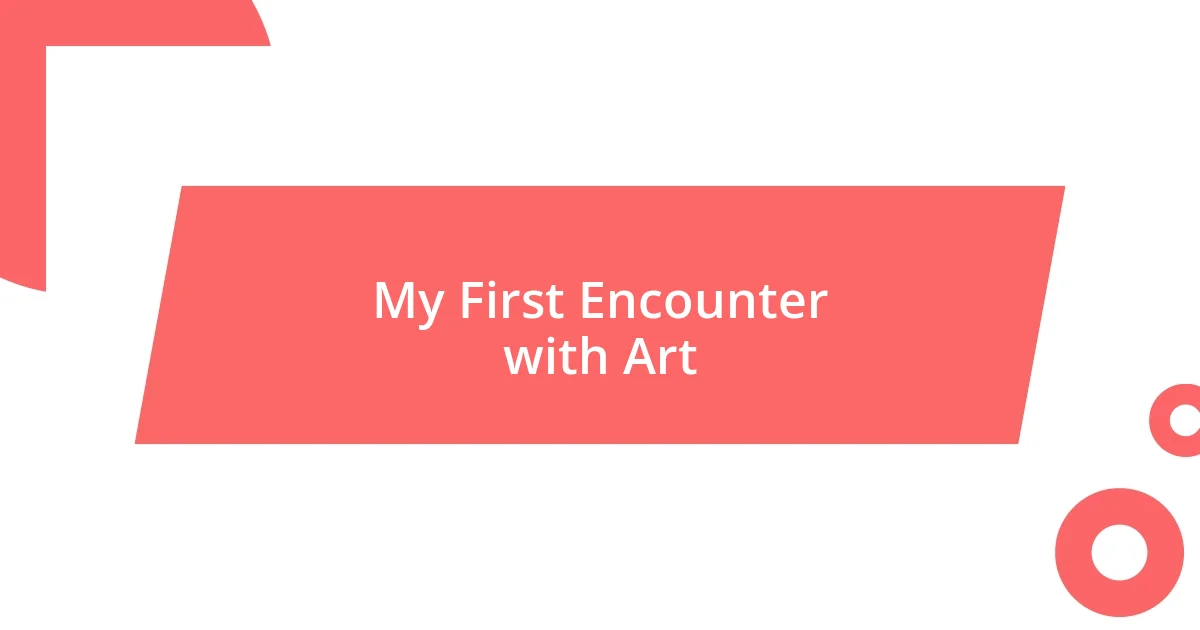
My First Encounter with Art
I remember the first time I stepped into an art gallery. It was a small, tucked-away space downtown, and I felt a thrill racing through me as I approached the large canvas on the wall. It was a swirling mix of colors that seemed to pulsate with life. I found myself lost in the emotions it evoked; can art really resonate so deeply?
Another vivid memory is the day my school took a field trip to a sculpture park. I stood before a massive stone piece, wondering how someone could transform rough materials into something so beautiful. The artist had managed to capture movement in solid rock, and it made me think: how do artists see the world differently than the rest of us?
These moments were more than just encounters; they awakened something dormant within me. I felt a stirring desire to express myself creatively. Have you ever felt that spark igniting in your soul, urging you to explore a new path?
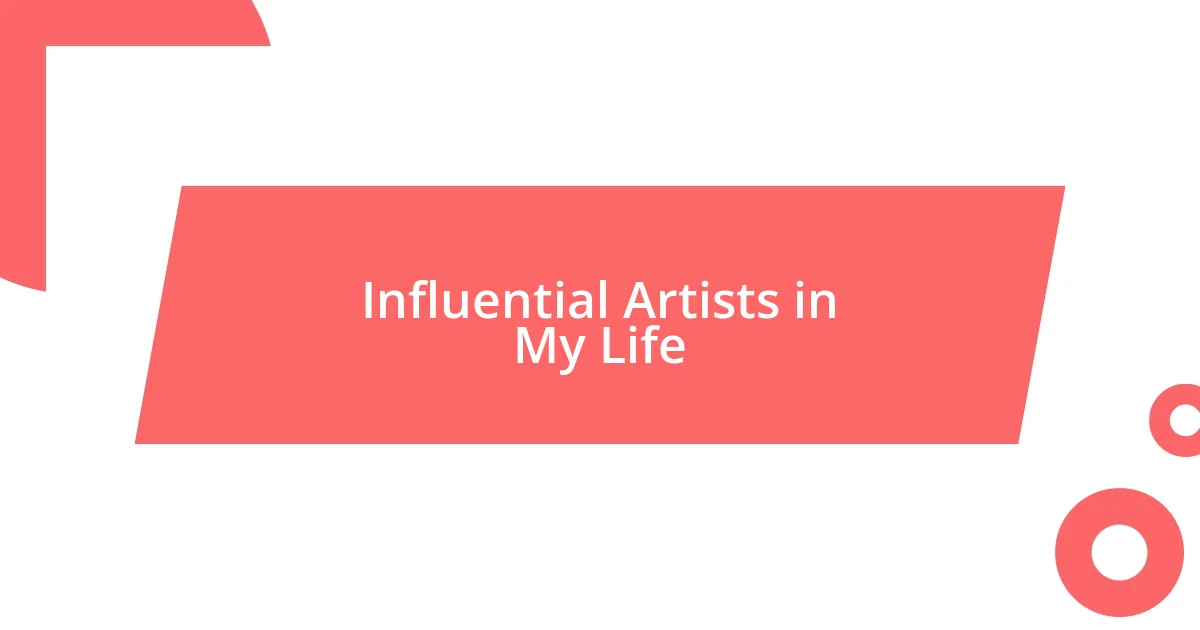
Influential Artists in My Life
There are a few artists whose work had a profound impact on my journey into sculpting. One artist that truly resonates with me is Michelangelo. The moment I learned about his ability to breathe life into marble was mesmerizing. As a child, I was fascinated by his sculpture of David; the sheer realism and emotion made me realize that art could transcend time and space. When I finally visited Florence and saw David in person, it felt like meeting an old friend.
Another key figure was Alberto Giacometti. His elongated figures, juxtaposed with raw materials, stirred something deep within me. It was as if he was capturing the human condition—loneliness, struggle, and a quest for connection. I often found myself analyzing his work, pondering what made it so hauntingly poignant. It inspired me to explore how I could convey emotion through form and texture in my own creations.
Lastly, I can’t overlook the influence of contemporary artists like Anish Kapoor, whose innovative use of space and light challenges my perception of sculpture. His piece, “Cloud Gate,” left a lasting impression during my first visit to Chicago. Standing in front of it, I was captivated by how it reflected the world around it, merging the external and internal. Moments like these make me appreciate the diversity in artistic expression and guide my own evolution as a sculptor.
| Artist | Influence |
|---|---|
| Michelangelo | Transcendent realism in marble sculptures |
| Alberto Giacometti | Emotional depth in elongated figures |
| Anish Kapoor | Innovative use of space and light |
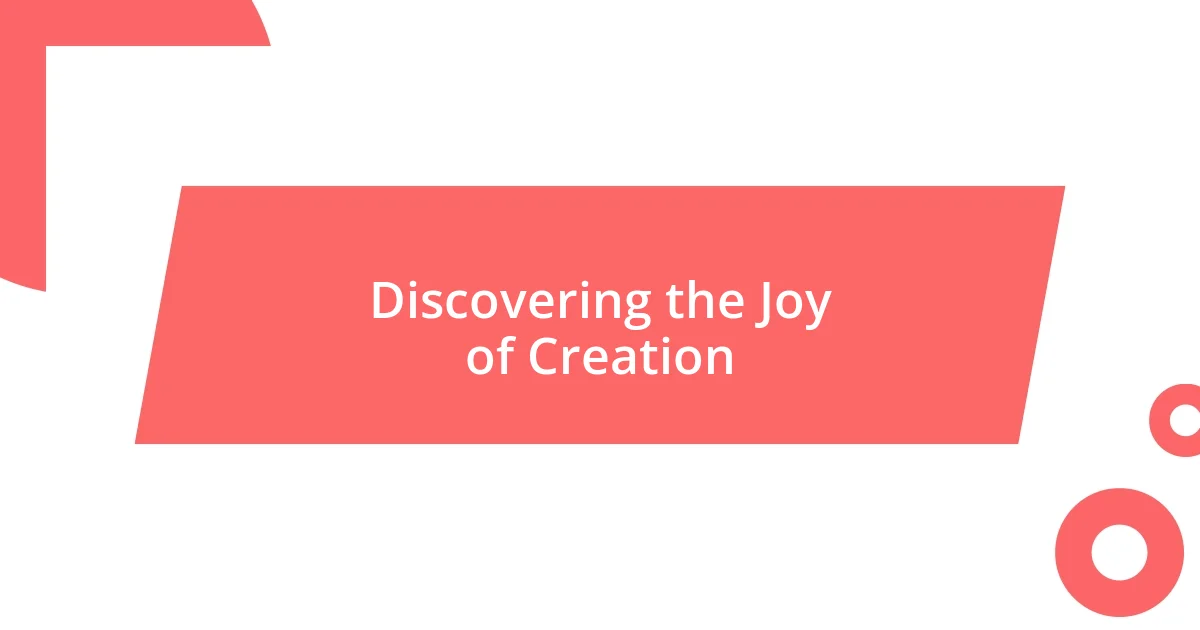
Discovering the Joy of Creation
The moment I first touched clay, I felt an unparalleled thrill coursing through my fingertips. It was as if the material awakened something within me, a connection that transcended words. Each sculpting session became a delightful adventure, where every piece I created felt like a part of my soul coming to life. I remember how liberating it was to mold the clay and see forms emerge from my imagination, capturing feelings I often struggled to articulate.
- The tactile sensation of the material sparked joy in my creative journey.
- Each shaping tool became an extension of my thoughts and feelings.
- Transforming raw clay into meaningful art filled me with a profound sense of accomplishment.
Finding joy in creation isn’t just about the final product; it’s about the process itself. There were times I poured my heart into a piece, only to find comfort in the struggle of bringing my vision to life. Moments of frustration and doubt only heightened the eventual joy of completion. It astounds me how art has the power to reflect one’s emotions so vividly, often providing clarity when words fall short.
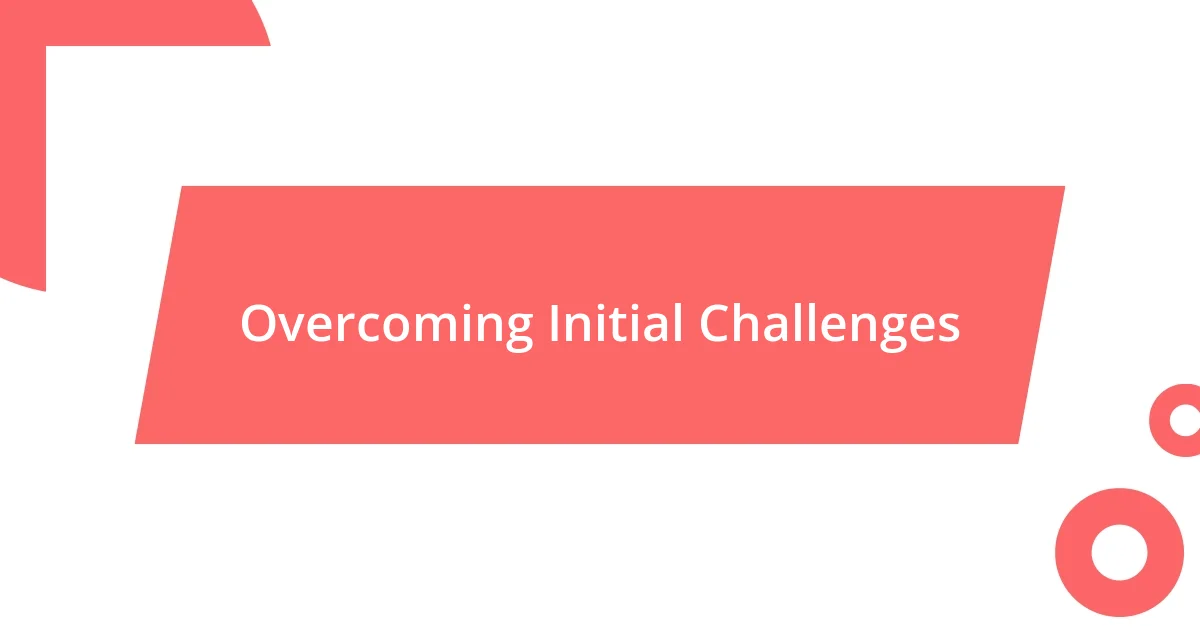
Overcoming Initial Challenges
One of the first hurdles I faced when starting to sculpt was the fear of failure. I vividly remember my very first attempt at sculpting a figure; the clay crumbled under my hands. I felt an intense wave of frustration washing over me. But instead of surrendering to that feeling, I decided to view it as simply part of the learning process. I kept reminding myself that every artist has faced challenges, and I could learn something from mine.
Embracing those challenges turned out to be a pivotal moment for me. There were days when I’d spend hours molding my vision, only to end up with a result that fell short of my expectations. At times, it felt easier to give up and walk away. However, I found solace in asking myself, “What if I just keep trying?” This internal dialogue transformed my setbacks into stepping stones. Gradually, with each piece I completed, I became more confident and resilient in my work.
Finding the right tools and techniques was another barrier I had to overcome. I remember feeling overwhelmed in the beginning—so many options! But rather than getting discouraged, I took it as an opportunity to experiment. I recall one night spent in my small workshop, surrounded by different materials, just playing around until I stumbled upon a particular tool that felt like an extension of myself. That sense of discovery not only fueled my passion but also reinforced the idea that challenges often lead us to unexpected joys in the creative process.
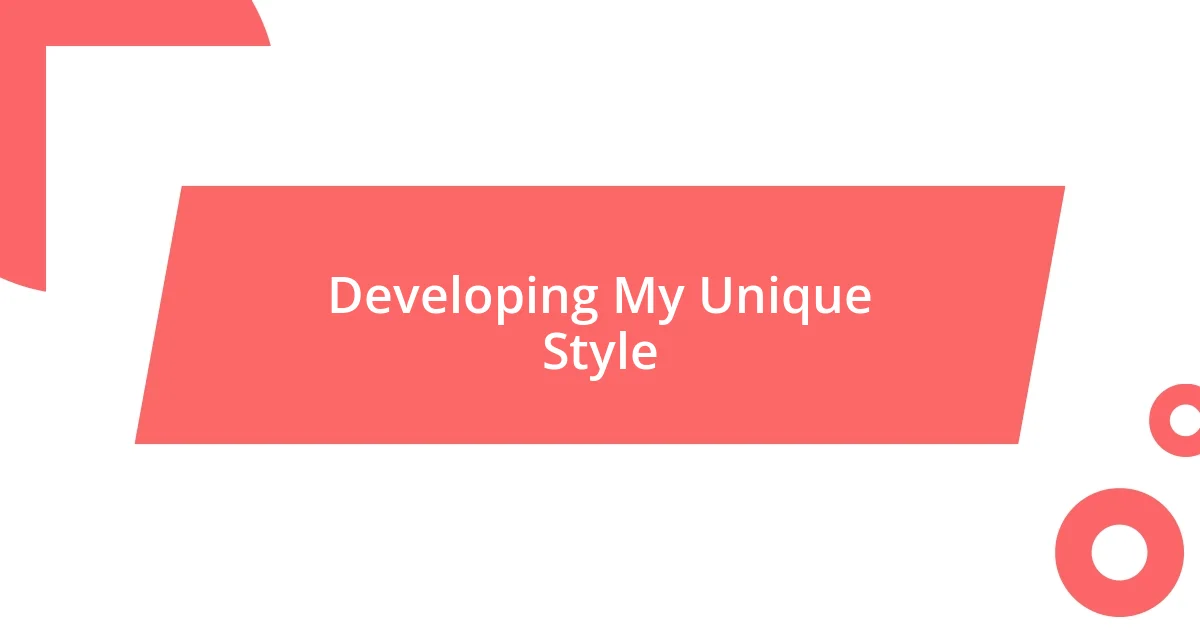
Developing My Unique Style
As I began to find my footing in sculpting, developing a unique style became an essential part of the journey. I can still recall those weighty moments when I initially looked at others’ work, feeling the temptation to imitate their techniques. Yet, deep down, I wondered, “What truly defines my art?” It was an intuitive realization that sparked a flame, urging me to dig deeper into my own experiences and feelings rather than mimicking others.
Experimentation played a crucial role in shaping my unique voice in sculpting. I remember a particular day when I decided to abandon technical precision and let raw emotions guide my hands. Instead of meticulously crafting a form, I embraced spontaneity, letting the clay respond to my mood. The result took me by surprise—an expressive figure that radiated a sense of freedom. That moment taught me the beauty of imperfection and how it could resonate with my audience far more than a perfectly crafted piece.
Exploring various materials also contributed to the evolution of my style. Once, while rummaging through a garage sale, I stumbled upon a stack of unconventional items, like broken ceramics and old tools. That discovery transformed my artistic approach; I integrated these found pieces into my sculptures. I found myself pondering, “How can this chipped plate tell a story?” The incorporation of these elements not only made my work distinctive but also enriched it with narratives that were personal and authentic.
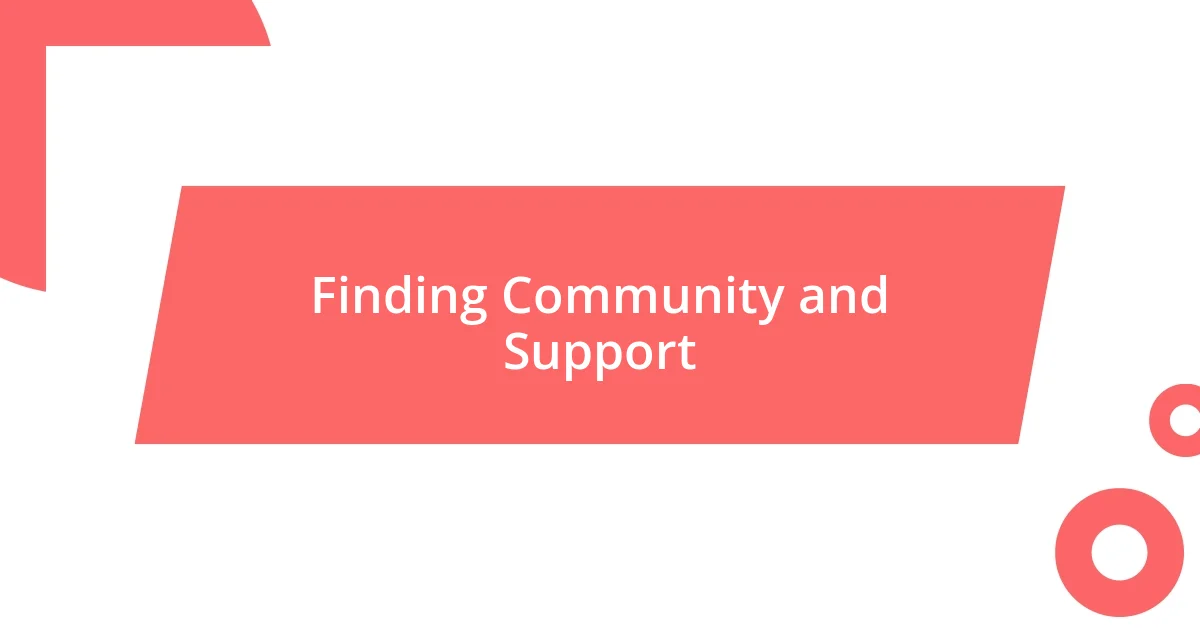
Finding Community and Support
Finding a community of fellow sculptors made all the difference in my journey. I distinctly remember walking into my first local art workshop, feeling a mix of excitement and hesitation. But the moment I was welcomed with open arms and encouraging words, all my nerves faded away. It struck me how important it was to be surrounded by people who understood both the struggles and the triumphs of the creative process.
I often found myself sharing my experiences and challenges with my newfound friends, and it was amazing how many could relate. One evening, while discussing our favorite techniques over coffee, someone mentioned their own battles with self-doubt. That conversation sparked a realization: we can lift each other up during tough times. The supportive energy within that group not only encouraged me to explore new ideas but also ignited a sense of accountability. It made me strive to push my boundaries, knowing that others were cheering me on.
Joining online platforms also provided an unexpected layer of support. I recall sharing a piece I was particularly proud of and receiving an outpouring of positive feedback and constructive critiques. It felt like a collective celebration of each other’s successes and hurdles. Have you ever posted your work online and hoped for encouragement? That moment taught me that community extends beyond physical spaces; it can be a powerful virtual lifeline filled with inspiration and motivation to keep creating.
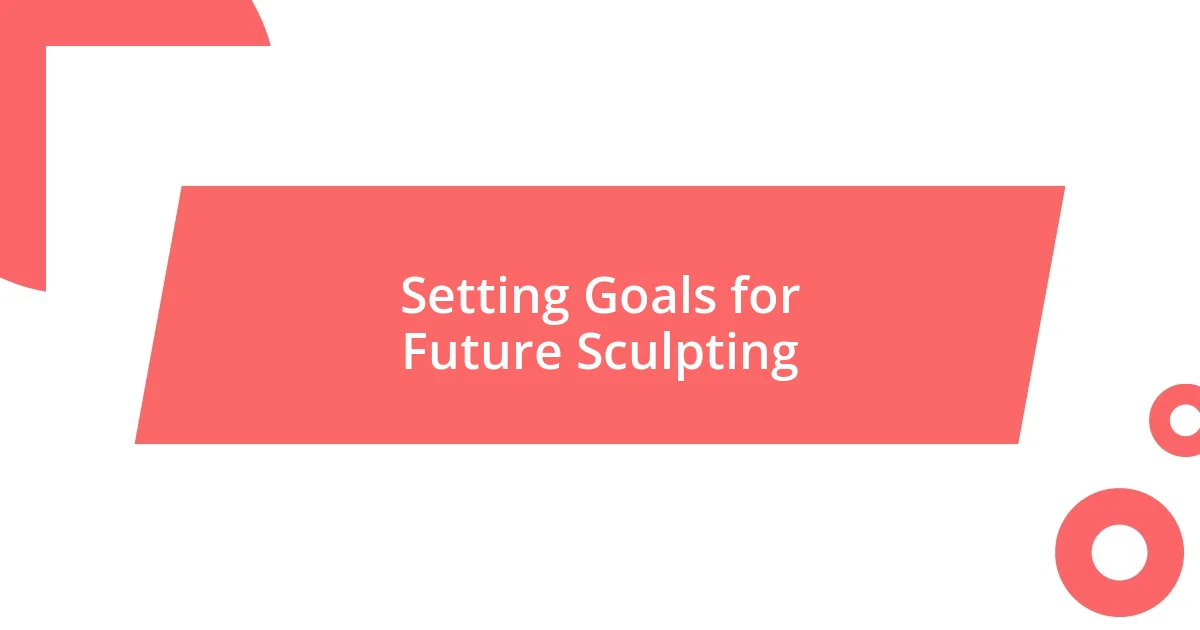
Setting Goals for Future Sculpting
Setting clear goals for my future in sculpting has shifted the way I approach each piece I create. I often find myself reflecting on the question, “What do I want to achieve with my art?” For me, starting small is essential—I focus on learning a new technique or experimenting with a different material each month. This way, I not only challenge myself but also allow my creativity to flourish without the pressure of perfection.
I remember a time when I set a goal to complete a series of sculptures centered on themes of growth and resilience. I thought, “Could I encapsulate my own journey into these forms?” That goal guided my designs and decisions, transforming abstract feelings into tangible pieces. Each sculptures felt like a step toward not just artistic maturity but personal growth, as I shaped clay into reflections of my past experiences.
Looking ahead, I also consider how I can use my art for a broader impact. I’ve recently been toying with the idea of creating pieces that promote awareness for environmental issues. Have you ever thought about how your art could contribute to a greater cause? Setting goals like these excites me and pushes the boundaries of my creativity—it’s about creating not just for myself, but also for the world around me.
